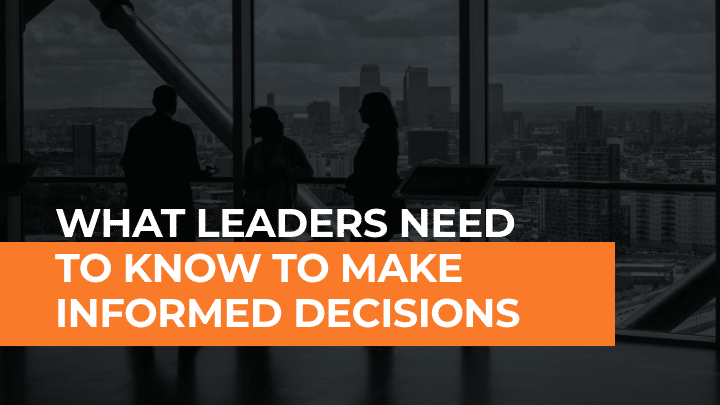The cybersecurity landscape is evolving at an unprecedented pace, driven by the increasing sophistication of cyber threats and the growing reliance on digital infrastructure. No longer confined to IT departments, cybersecurity has become a fundamental business priority, demanding attention from executives and board members alike.
With cybercriminals leveraging advanced tactics, organizations must shift from reactive security measures to proactive, comprehensive strategies that integrate security across every business function.
This shift is not just about mitigating risks – it’s about ensuring long-term business resilience and trust. Studies reveal that human error contributes to the vast majority of breaches, highlighting the need for organizations to go beyond traditional security tools and embrace a holistic approach.
From regulatory compliance to emerging technologies like AI and cloud security, leaders must recognize that cybersecurity is not just a technical necessity but a critical driver of competitive advantage, customer confidence, and sustainable growth.
The Evolution of Cybersecurity Leadership
Back in the early days of cybersecurity, it was primarily the responsibility of the IT department. Security was an afterthought, something that was bolted on after the fact. But those days are long gone. Today, cybersecurity isn’t just about having a firewall or an antivirus solution – it’s about having a comprehensive strategy that permeates every aspect of your business.
The reality is stark – human error remains a dominant factor in cybersecurity breaches. A 2024 report found that 68% of data breaches stem from human mistakes, such as falling for social engineering attacks or accidental data exposure. Similarly, 66% of CISOs in the U.S. identified human error as their organization’s biggest cybersecurity vulnerability.
These aren’t just statistics; they’re warning signs that the old approach of implementing best-of-breed point solutions and allowing them to run in silos just does not work in protecting against the dynamic and adaptive nature of today’s cyber threats.
Critical Questions Every Board Needs to Address
Let’s face it. Most executive teams and boards are still playing catch-up when it comes to cybersecurity. They’re asking basic questions about compliance when they should be thinking strategically about their security posture. So what questions should leaders actually be asking?
Understanding Your Threat Landscape
First and foremost, do you truly understand the specific threats targeting your industry and organization? Hackers don’t always break through where you expect them to, and all doors need to be watched. Like the cloud door, or the email door, or the front door. It could be as easy as a datasheet in the hands of an unintended recipient.
Gone are the days when cybercriminals were just opportunistic script kiddies. Today’s threat actors are running sophisticated operations with business models that rival legitimate enterprises. They’re studying your industry, understanding your pain points, and developing targeted attacks designed to exploit your specific vulnerabilities.
Moving Beyond Security Silos
If there’s one thing I’ve learned over the years working with thousands of organizations, it’s that cybersecurity cannot exist in a vacuum. It must be integrated across the entire organization, from HR to marketing to operations. Every department handles critical data, and every employee represents a potential entry point for attackers.
Businesses are moving away from point products that deliver specific features or technological benefits, to platforms and partners that can deliver true business outcomes. If the “platformization” of your cybersecurity stack and strategy is not a top initiative, your organization will quickly find itself at a disadvantage against the attacks of today and the threats of tomorrow.
Data Privacy as a Competitive Advantage
Think about this – what happens when your customer data is compromised? Beyond the immediate financial impact, the damage to your reputation and customer trust can be irreparable. With regulations becoming stricter across the globe, from GDPR to CCPA and beyond, data privacy isn’t just a compliance issue – it’s a business imperative.
The companies that will thrive in the next decade are those that view data privacy not as a regulatory burden, but as a competitive advantage. They’re the ones building privacy by design into their products and services, demonstrating to customers and partners that they can be trusted with sensitive information.
Embracing Emerging Technologies Safely
The cyber industry is witnessing another evolutionary shift right before our eyes. AI and machine learning are revolutionizing both attack and defense strategies. IoT devices are expanding the attack surface exponentially. Cloud adoption is accelerating faster than security controls can keep up.
Leaders need to understand that these technologies represent both opportunity and risk. Implementing AI-driven security solutions can dramatically improve threat detection and response times. But without proper governance and integration into your broader security strategy, these same technologies can create new vulnerabilities.
Investing in Security as a Business Enabler
Many organizations still view cybersecurity as a cost center rather than a strategic business enabler. This mindset needs to change. In today’s digital economy, strong security is what allows businesses to innovate faster, enter new markets with confidence, and build lasting customer relationships based on trust.
Cybersecurity is too critical to leave up to a non-specialized, jack-of-all-trades technology partner. You wouldn’t buy your bread from a butcher, just like you wouldn’t buy your meat from a bakery. Choose a cybersecurity-focused partner to guide you through this complex journey.
Building a Security-First Culture
At the end of the day, technology alone can’t protect your organization. Your people remain both your greatest vulnerability and your strongest defense. Building a security-first culture isn’t just about annual training sessions or compliance checkboxes – it’s about fundamentally changing how everyone in your organization thinks about and handles information.
This cultural shift must start at the top. When board members and executives demonstrate their commitment to security through their actions and decisions, it sends a powerful message throughout the organization that security matters.
The Path Forward
The evolution from traditional security approaches to strategic, board-level cybersecurity is clear: each step represents a leap forward in capability and resilience. Leaders who ask the right questions, focus on integrated platform approaches, and view security as a business enabler rather than a cost center will position their organizations to thrive in an increasingly hostile digital landscape.
Remember, your adversaries are organized, well-funded, and highly motivated. They’re not resting on their laurels, and neither should you. The future belongs to organizations that build security into their DNA, making it as fundamental to their business as their products, services, and people.
Check out our Customer Platform


Redefining Network Protection: Cisco Hypershield
Traditional firewalls are no longer sufficient to protect against the sophisticated threats modern organizations face. Recognizing this, Cisco has introduced Cisco Hypershield, a groundbreaking security solution that promises to revolutionize network protection. With...


Recent Comments